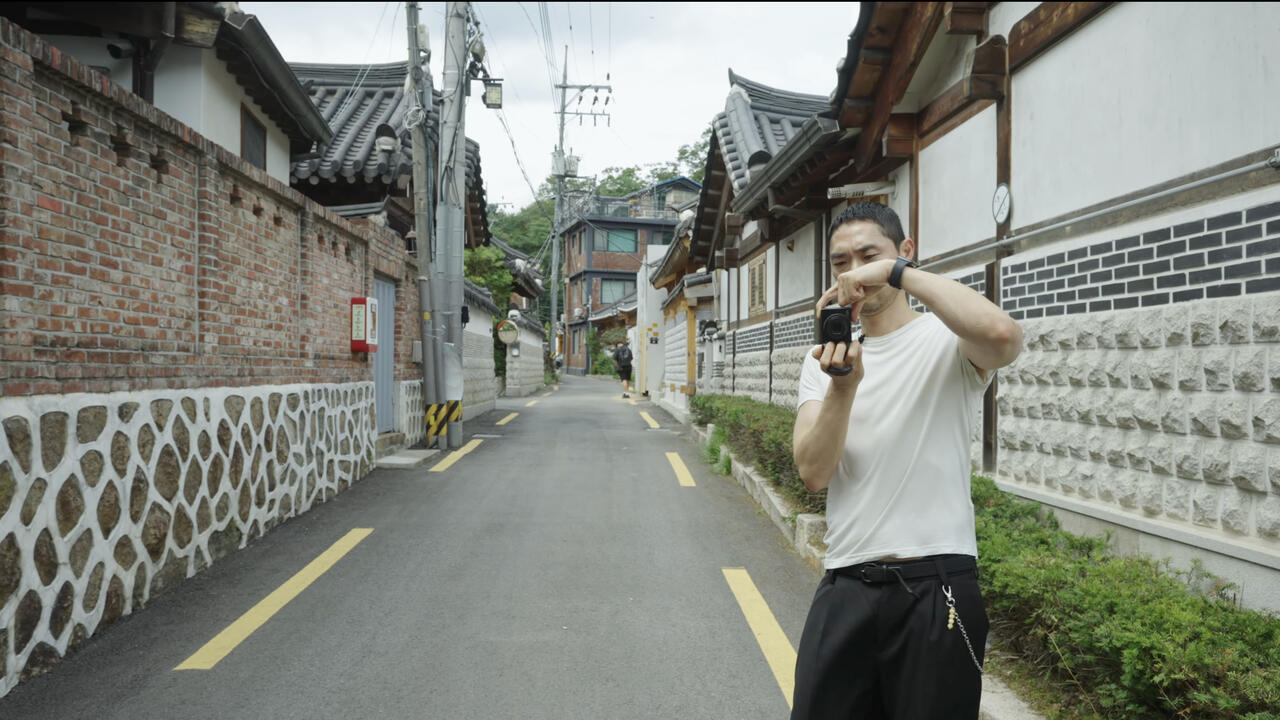Art & Language
‘Art & Language is generally thought to be a cabbalistic, esoteric and disturbing movement. Rational attempts to grasp their programme have been overcome by the mythology of a monastic brotherhood.’ This fragmentary statement in Internal Descriptions as External Description (1974), installed high on the wall in the concave stairwell at Lisson’s New Space, perhaps represents – in a more traditional sense – the resistance to reification and mysticism for which Art & Language are well known. With work described as ‘genre scenes of spatial and cultural displacement’, their latest exhibition presented a number of deliberate historical shifts in a familiarly reflective manner, yet what was most interesting was a presentation of the material the group had produced with pop ensemble The Red Crayola. A survey of this work, made between 1974 and 1981, was shown downstairs and consisted of video documentation, archive material, posters and, strangely, a daily karaoke event.
Corrected Slogans was the first LP to be produced and was worked on by Art & Language and Red Crayola founder member Mayo Thompson between 1973 and its release date in 1976. The album’s artwork, musical scores and other ephemera were shown in the room next door to the two videos And Now for Something Completely Different and Nine Gross and Conspicuous Errors (both 1976), which have a similar lyrical content to the album and which both contain ironic posturing that thinly masks an awkward energy brought about by the mixture of political anthems and rock and roll. Of the two videos, Nine Gross and Conspicuous Errors best represents this experimental vitality. Unrehearsed songs are performed by groups of unsuspecting participants as well as the knowing core collaborators Art & Language’s Michael Baldwin and Mel Ramsden, with Thompson on guitar and Jesse Chamberlain on drums. Activist slogans, such as ‘we must ferociously attack so called institutionalized egalitarianism – it is a smokescreen, which attempts to replace activist content with liberal structures’, are chanted en masse and played out as theoretical quotations and self-mocking mantras. At one point Ramsden sings the line ‘Marx’s old chestnut “the philosophers know how to interpret the world, the point is to change it” is embedded in the nexus of dialectics’ and Thompson makes a dedication ‘to Ludwig Wittgenstein, who said “you cannot be a philosopher and a Communist at the same time”’.
Through visible misunderstandings of each text or acts of insincerity on the performers’ behalf, there’s an inevitable displacement of belief in these videos, where each deliberately inauthentic voice strives for a form of validity. Although the musical backing by The Red Crayola is vital and exciting, the aim, through the unfeasibility of the verbal performances and the lyrics – or the ‘conspicuous errors’ – appears to be to keep the gap between the performer and the text open. This is enforced by philosophical ramblings about the ‘commodification of social relations’ and remarks about language serving a strong managerial role, and interspersed by some expertly amateur routines, with Ramsden, in particular, fluctuating between self-conscious embarrassment – indicating the confusion of the situation – and an overconfidence about his own workmanlike timekeeping. At one point he looks extremely proud of a fellow player who’s so lost she has no idea what line she’s meant to be singing. Baldwin also appears ridiculous in his Travis Bickle sunglasses, growling comedically into the microphone and whistling pointlessly along with Ramsden.
The karaoke event took place between 5pm and 6pm each day, and tracks from the album Kangaroo? (1981), such as ‘A Portrait of V. I. Lenin in the Style of Jackson Pollock’ were available to sing along to. Another ‘gross and conspicuous error’ started to operate here, but this time the question appeared to be, what kind of historical displacement occurs when we the spectators, as blind performers, sing these 24-year-old lyrics? As before, we are complicit in our own bad performance and misreading of these essay-like texts and through a historical distance provide a necessary misinterpretation of Art & Language’s work. This is an essential component of the group’s practice, and if they represent a resistance to the category of Conceptual art, where a Duchampian model is ‘emptied of its transgressive potential and rendered congenial to the managers of interdisciplinarity’, then maybe this combination of music and politics is something to strive for. If the original intention of these irreconcilable forces was to ‘stress the grammar and the sense of the text to the point of oblivion’, then through the lens of history this partnership at least still appears alien and strange, but for different reasons. When current bands are mimicking the urgency of outfits from the late 1970s, minus the political awareness, and younger artists and curators are fixated on radical models but lacking any real substance, there’s another, unwitting form of historical karaoke operating. Perhaps what we need right now are more deliberately irresponsible yet ‘real’ collaborations of this sort.

















